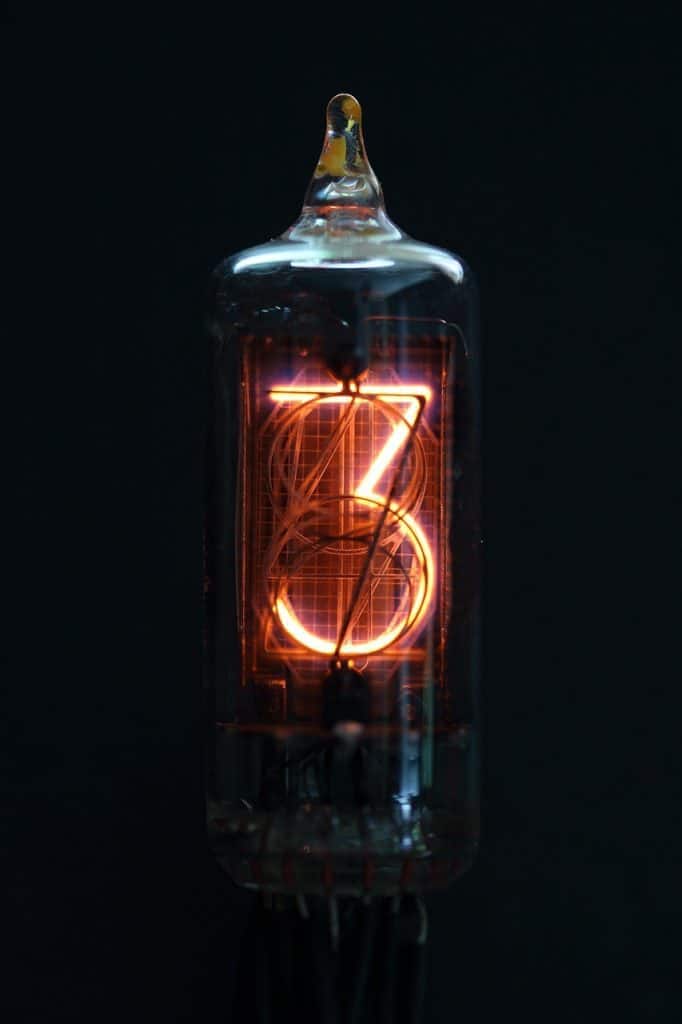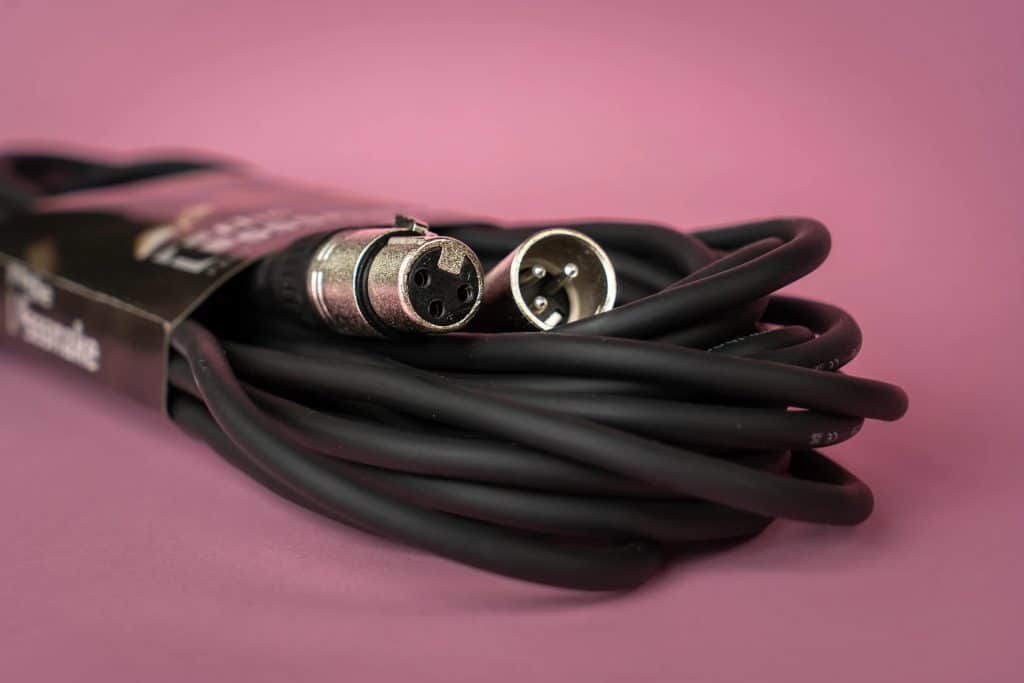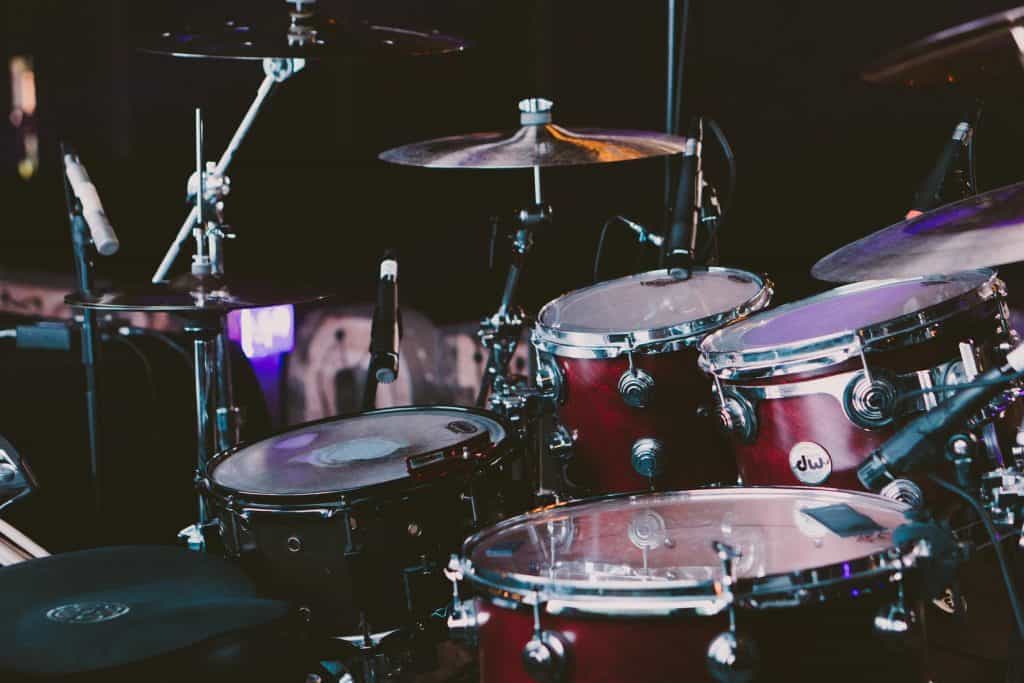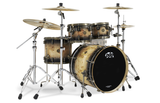What is a Mic Preamp and How does it Work?
What is a Mic Preamp and How does it Work?
If you’re diving headfirst into the world of recording and professional audio production, you’ll be realizing pretty quickly that the learning curve is steep.
There’s just so much tech involved that doesn’t exist in any other circles, and it can be pretty tough to get your head around it all, especially if your musical and technological experience is fairly limited.
One such piece of recording tech is the microphone preamplifier, or mic preamp for short.
Perhaps what makes these little devices so difficult to understand is that everything goes on inside a shiny metal box.
There are no moving parts to see and help you understand what’s going on, so it can seem like a bit of black magic sometimes.
So, we’re here to explain exactly what’s going on inside these mystery boxes, and how to choose the perfect mic preamp for your purpose.
There’s no wizardry going on, either, so don’t stress.
There will be no foolish wand-waving or silly incantations in this class.
What Is A Mic Preamp?
A mic preamp is a device that takes the output of a microphone (low in terms of nominal level) and amplifies it to line-level, a standard used by pretty much all professional audio gear.
You’ll also find mic preamps in audio interfaces like Focusrite Scarlett 2i2. Interfaces that don’t have a mic preamp built-in tend to be referred to as analog to digital converters, as opposed to full-blown interfaces.
Another common piece of tech where preamps are employed is in field recorders, like the Zoom H6.
Source: https://unsplash.com/photos/3553NJXZrrE
How Do Mic Preamps Work?
Let’s start with a little lesson in electronics:
Not all signals are created equal.
There are a few different kinds of electrical signals (not to be confused with cables and connectors, which don’t necessarily correlate to the type of signal), and a mic preamp basically turns a mic level signal to a line-level one.
A mic level signal is what comes out of the end of your mic (obviously) and typically ranges from -60 dBV to -20 dBV.
Line level signals, however, operate at a nominal level of +4dBu (1.78 dBV), which is quite a bit higher.
As line level is the professional standard used by all recording and mixing gear, we need a device to turn up the output of the mic so we can use it in the home studio.
Hence, the mic preamp!
Where Are Mic Preamps Found?
One of the difficulties in understanding what the mic preamp is all about is understanding that they can be found as standalone units, or as a single component of a larger device.
For example, pretty much every mixing desk on earth has a number of mic preamps, one for each channel on the desk.
You’ll also find mic preamps in audio interfaces like Focusrite Scarlett 2i2. Interfaces that don’t have a mic preamp built-in tend to be referred to as analog to digital converters, as opposed to full-blown interfaces.
Another common piece of tech where preamps are employed is in field recorders, like the Zoom H6.
Source: https://unsplash.com/photos/3553NJXZrrE
Of course, then you’ve got your standalone mic preamp units, which are where the real fun starts.
These handy little devices can be plugged in front of your audio interface or mixing board, and provide you with a variety of different tonal options for shaping the sound of whatever you’re recording.
From here on out, we’re going to be talking about this kind of mic preamp.
Before we get into which preamps we recommend, let’s take a look at the key features found in such devices, so you know what you’re looking at.
How To Choose A Mic Preamp
Remember how we said not all signals are created equal?
Well, neither are mic preamps.
So, if you’re gonna be prepared to pick the right unit for your needs, you better know your rack units from your 500 series.
Let’s take a look.
Inputs and Outputs
The first thing to check out when deciding on a new mic preamp is what kind of inputs and outputs it has.
Obviously, all preamps have at least one XLR mic input. I mean, that’s kind of the point.


You’ll also find at least one line-level output. Again, the whole idea.
However, there are a few other kinds of inputs you’ll find:
- Hi-Z: also known as instrument input, or DI. These inputs have high-impedance and are designed to accommodate plugging in a bass or electric guitar directly.
- Line: some preamps have line inputs as well. These allow you to connect instruments such as analog synthesizers.
- ADAT: This is a digital protocol, and allows preamps to receive digital inputs from other preamps.
Output-wise, you might also find:
- XLR: For connecting to other gear.
- ADAT: Digital output to connect to other audio gear.
- USB: If the preamp has converters, then it might have a USB output to connect directly to your computer.
Tonal Palette
A huge reason for collecting a bunch of different mic preamps is because they all sound different.
It’s kind of the same idea as having a bunch of different mics, or for guitar players, collecting different amps.
Some preamps are designed to be as transparent as possible. That means they do the job of amplifying the mic output, and nothing else.
That sounds a bit boring to me, to be honest, which is why I tend to opt for a more colored preamp.
One of the most revered preamps of all time is the Neve 1073, known for its juicy, vintage sound.
Tube vs Solid State
Guitar players like myself will be familiar with the age-old tube vs solid-state amp debate.
The same goes for mic preamps.
The technology that is employed inside the box to amplify the mic signal is either a vacuum tube or a solid-state transistor.
Neither is better than the other; they just offer different sound palettes.
On the whole, tube preamps are more, well, tubey. They offer the vintage, overly saturated sound when you crank them right up.
Solid-state preamps have a tendency to be cleaner and clearer, but they can still exude a bunch of character.
Form Factor
Just like the internals of a mic preamp differ, so too do the externals.
As a general rule, mic preamps come in three different shapes and sizes:
- Rackmount: Housed inside a standard 19” rackmount.
- Desktop: Standalone units.
- 500-series: AKA lunchbox, these are small, vertically-oriented units, which need to be mounted in a desktop or rack-mounted chassis.
The choice of form factor is essentially a decision based on the functionality you’re looking for.
Channels
Some preamp units are designed to take care of just a single microphone input, whereas others can take 4 or even 8 inputs at once.
This is known as the number of channels that the preamp unit has.
The decision you need to make will be based on how many microphones you’re going to be plugging in.
If you only ever plan on recording one mic at a time, or you’re just adding an interesting bit of color to an existing setup, then a single-channel preamp should suffice.
If, on the other hand, you need to record a whole drum kit using the same tonal palette, then you should consider grabbing an 8-channel mic preamp.
Other Features
Aside from your regular input, output, and gain control, mic preamps may (or may not) offer a variety of other features.
As always, whether you need them or not is going to depend entirely on your intended purpose.
High-Pass Filter
A common feature found on mic preamps is the ability to filter out any low frequencies.
This is helpful when recording instruments such as voice or electric guitar, where there isn’t a lot going on down in that region.
The exact frequency where the bass roll-off begins will differ from unit to unit, but it’s usually somewhere between 80Hz and 160Hz.
Phase Reverse
This feature flips the polarity of your mic signal. It’s helpful when recording with two or more mics simultaneously so you can ensure all of the signals are in phase.
48V Phantom Power
Basically, all mic preamps have these features these days.
Phantom power is necessary to power condenser microphones, a popular choice of mic.
Though it’s pretty much a standard feature, you should still make sure the mic preamp you’re looking at buying has it if you have a condenser mic, especially when looking at older, more vintage gear.
On occasion, the signal at the input of the mic overloads a microphone preamp, even at the lowest possible amount of gain.
To get around this, you need some form of attenuation, known as a pad.
You might find this on the mic itself, or on the preamp. Or both.
Channel Strips
Some mic preamps incorporate features such as equalization or compression, and these are typically described as channel strips.
The name comes from mixing desks, which have a number of channel strips that are generally comprised of mic preamps, equalization, and sometimes compression, or inserts for other analog gear.
Since mixing desks are a lot less common than they used to be (thanks to DAWs taking over), these cool little units have been developed to give you an entire analog world in one little box.

You can use them to manipulate audio on the way in (while you’re recording) or connect them to your audio interface for some post-processing analog goodness.
Why Choose An External Mic Preamp?
If you’re already working with a mixing desk or audio interface that has preamps built in, then you might be wondering if there’s really any point in investing in external preamps.
The answer is, as always, it depends.
Do you need to buy external mic preamps?
No.
Plain and simple. If you’ve got a preamp in your interface, then your mic should work just fine.
However, the preamps in most interfaces are designed to be as clean and as transparent as possible.
For some, that’s desirable, as you don’t want your preamps adding any color to your instrument and mic selection.
In other cases, though, a bit of analog color can go a long way to giving your recordings a nice bit of flavor and flair.
So, external mic preamps should be viewed as tools to add color and interest to your recordings, kind of like using different guitar pedals in front of your amp to achieve various tones and feels.
8 Of The Best Mic Preamps Around
dbx 286S
First on our list is the 286S by dbx.
This is a classic single-channel mic preamp in 19” rack mount format.
Actually, it’s a full-blown channel strip, but more on that soon.
The preamp in the 286S is nice and clean, so it doesn’t offer a lot of color variation, but it does give you an upfront sound and decent 60dB of gain.
The 4-LED level indicator makes life simple: get to yellow sometimes, don’t hit red. Easy.
Next to that is a 48V phantom power switch and an 80Hz high-pass filter for getting rid of those rumbly lows.
Where the 286S really shines, though, is it’s functions that lie in the dynamic-field.
As a brand, dbx is well-known for it’s compression, and the 286S delivers on this in spades.
You get dbx’s famous OverEasy compressor with drive and density controls that deliver that desirable ‘in your face’ vocal sound that propelled dbx into the spotlight.
That’s not all though.
An expander/gate allows you to cut the noise floor out, and an intuitive de-esser helps to keep sibilance at bay.
Then (yes, more!), you get both low and high-frequency exciters to really amp up both ends of the spectrum.
The high-end exciter is especially nice on vocals, making the dbx 286S the ideal channel strip for singers.
Focusrite ISA ONE
You’ll probably know Focusrite for their excellent range of budget-friendly, yet capable audio interfaces, such as the Scarlett 2i2.
But what you probably didn’t know is that they came up building full-scale outboard studio equipment. One such piece of gear was the ISA 110, a mic preamp built by Rupert Neve himself.
The ISA ONE is based on the original topology of the 110, bringing this revered tech into desktop format and adding a few other handy features, making this a portable channel strip for the modern recording artist.
The first thing you’ll see on the face of the ISA ONE is that old-school VU meter, which is more than a little mesmerizing to look at, it’s actually incredibly accommodating for monitoring input gain.
The sound of the preamp is forward, but not overly aggressive, with a definite character that is natural yet flattering. It’s not oozing with transformery or tubey goodness, but we’ve got some units coming soon that off that sound.
An interesting aspect of the ISA ONE is the variable impedance, which allows you to dial in the kind of response you’re looking for. I’d probably just leave it on the ISA 110 mode, to be honest. I mean, that’s why you’re buying it, right?
It offers a significant amount of preamp gain (60dB, which can be switched down to 30dB to accommodate louder signals with more finesse), and a handful of other features on the input, including:
- High-pass filter
- 48V phantom power
- Phase flip
The input/output offering on the ISA ONE is pretty unique, too.
On the input front, you’ve got both mic and line inputs, with the line input coming in on either an XLR or a TS jack, as well as a Hi-Z instrument input on the front panel.
Not only that, but the rear panel allows for a stereo cue input, so you can overdub vocal tracks while hearing your backing track.
Such playback is made possible with a stereo headphone output on the front panel.
The output of the ISA ONE comes in the form of a male XLR port, or you can opt for a model with a built-in digital card, which takes care of analog to digital conversion and allows you to connect to the likes of an ADAT port on your interface.
Conclusion
Though you could spend weeks or even months poring over preamps online, checking out videos on YouTube of how they sound, and reading reviews written by your favorite audio engineers, there really is no substitute for experience.
So, dive in headfirst, grab a couple of preamps that sound like you, and have fun learning by listening!
Source: beginnerguitarhq.com/jenmiller
Explore Popular Articles
The Innovative Beat-Making of Producer and Drummer Daru Jones
The Innovative Beat-Making of Producer and Drummer Daru Jones Daru Jones is an accomplished dru...
Emerald City! Rogers Drums Now Available in LTD Green Marine Pearl
Rogers Covington SeriesGreen Marine PearlThe Custom Limited Edition Covington in show-stopping Gree...
What is a Mic Preamp and How does it Work?
What is a Mic Preamp and How does it Work? March 22, 2021 by Beginner Guitar HQ Staff If you’re div...
The G&L Tribute Series ASAT Classic Electric Guitar
The G&L Tribute Series ASAT Classic Electric Guitar is a must-have for any musician looking to take...
Introducing the 2023 Ltd Drum Set by Pacific Drums
Drumming is an art form that requires precision, creativity, and the right equipment. Pacific Drums,...







